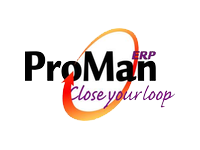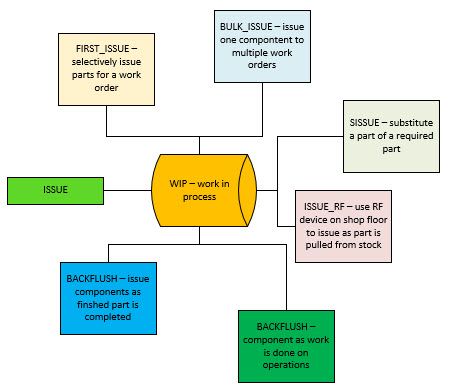ISSUE – this issues one component to a single work order. This can have comments as to why the part was issued as well as a pre-defined reason code. We support location control, lot control, and serial numbers for components.
FIRST_ISSUE – this provides the user a list of components required on the work order. The user can then advise the quantity issued to the work order. This works great in the instance where kits are picked in the stock room and then moved to the shop floor for production.
BULK_ISSUE – this issues a component to different work orders, each with their own quantities. Many people use this when a component is late from the supplier and then finally arrives. The parts can then separated and delivered to the shortages on the shop floor. This is done in a single transaction in the system.
SISSUE – there are times where a component is not available when it is needed. The system maintains a list of acceptable substitutes. We have a way to change the required component in the planning stage, but if this is now down to the execution time, we can substitute the part and issue the new one into the work order, all in a single step.
ISSUE_RF – there are circumstances where we the stockroom is large or is a number of locations in the plant. It can be advantageous to scan the part as it is pulled from stock. This keeps the transaction in the system in sync with the actual activity on the floor, supporting a more accurate stock on hand.
BACKFLUSH – the system can look at the bills of material for the part being made, and then remove the standard quantity of components from stock. Some examples of this might be:
- components stored in a silo and consumed as the parts are finished
- wire is pulled from spools as needed by production process
- material/cloth pulled into a machine as parts are made
- casting and injection processes may use this approach
In this case, as finished parts are reported, the standard material is relieved from inventory.
BACKFLUSH by Operation – in some cases we have major parts that are issued into the system. However, we have other parts that are not part of our tightly controlled inventory. Bench stock is a common phrase, as well as shipping boxes. These items can be relieved from stock when the work is completed at that operation. This is typically used in cases where the lead time for the work order completion is going to take some time and we want the on-hand quantity for these components to be accurate (for planning purposes). In this case, the components can be flagged as consumed at an operation and as labor collection or production processing is completed, the parts will be relieved.
https://proman-erp.com/backflush-components/
Many people use combinations of these methods to transact their inventory movements.
Give us a call to discuss your requirements
1-888-PRMOAN1

